Successful licensing of mobile spectrum starts with a spectrum roadmap that provides a schedule for forthcoming releases to meet the government’s broadband plan as well as other demands on spectrum. GCC countries such as Bahrain, Kuwait, Oman, Qatar, Saudi Arabia and the UAE are among the 5G pioneers. However, the pace of 5G development differs significantly across the MENA region.
Here are key issues for governments and regulators in MENA to consider when they develop their spectrum roadmaps.
1. Spectrum roadmaps
Spectrum roadmaps help ensure sufficient spectrum is available to meet the requirements driven by changing technology and demand. Not every country in the region will launch 5G services at the same time. What remains important is to make decisions that promote effective 5G rollouts, in order to prioritise capacity, coverage and affordability. This report looks at MENA 5G spectrum needs, and the current status across the region. It then sets out a roadmap, to help governments and regulators enable 5G in the most efficient way possible. It also provides recommendations based on international best practices.
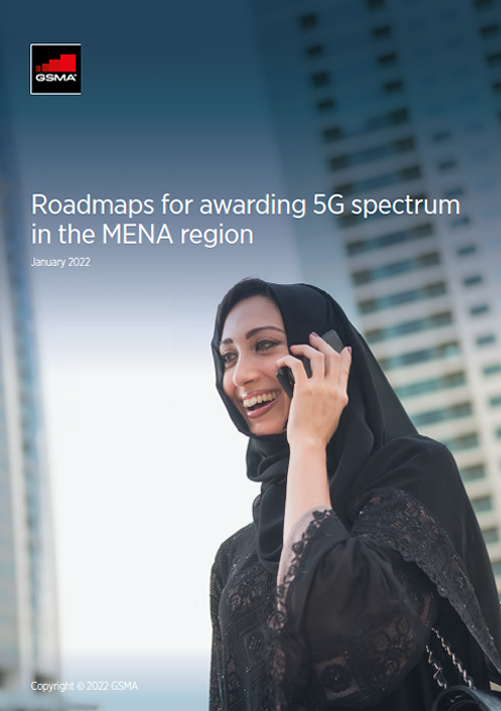
Roadmaps for 5G spectrum: MENA

Country insights
2. 5G spectrum licensing
Licensing approaches will affect the impact of 5G spectrum on MENA. Robust licensing approaches which prioritise mobile broadband services above revenue maximisation are vital to delivering 5G for all businesses and consumers, creating digital inclusion and lowering the mobile usage gap. Optimal auction design and licence conditions will help 5G flourish and allow it to have the greatest impact on economic growth. Artificial spectrum scarcity must be avoided and setting 5G spectrum aside for verticals in priority bands can jeopardise the success of public 5G services, raise prices and waste spectrum. Sharing approaches like leasing are better options where verticals require spectrum access.
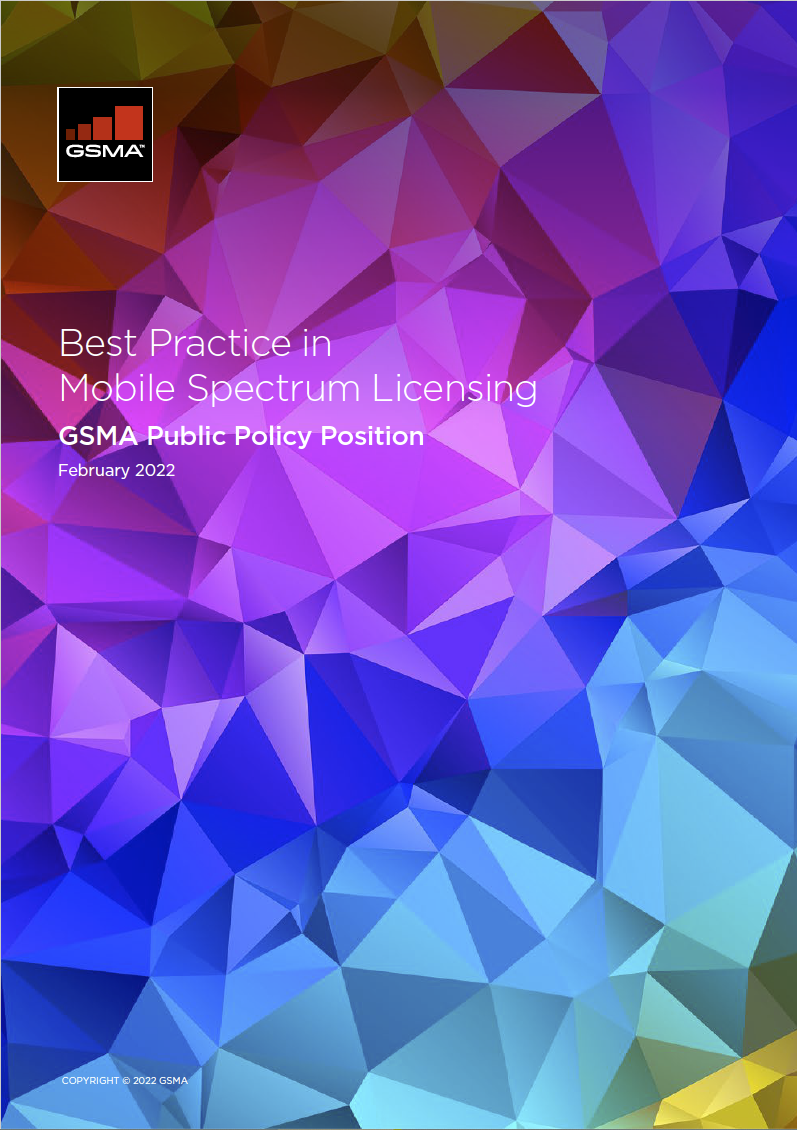
Effective spectrum licensing
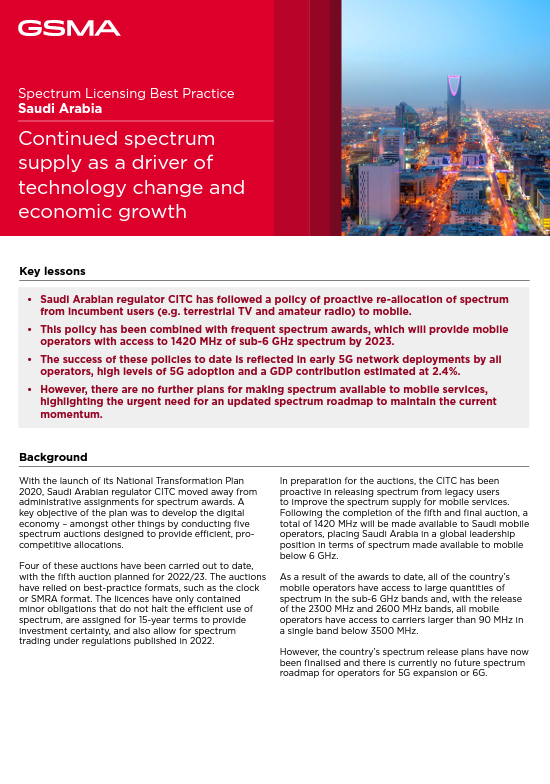
Country insights
3. Spectrum pricing
High spectrum prices continue to hinder the roll out of mobile services in cities and rural areas. However, for countries that take a different approach there are several benefits. For example, larger amounts of spectrum and lower spectrum prices are strongly linked to higher population coverage. The same is true for better download speeds and increased service adoption.
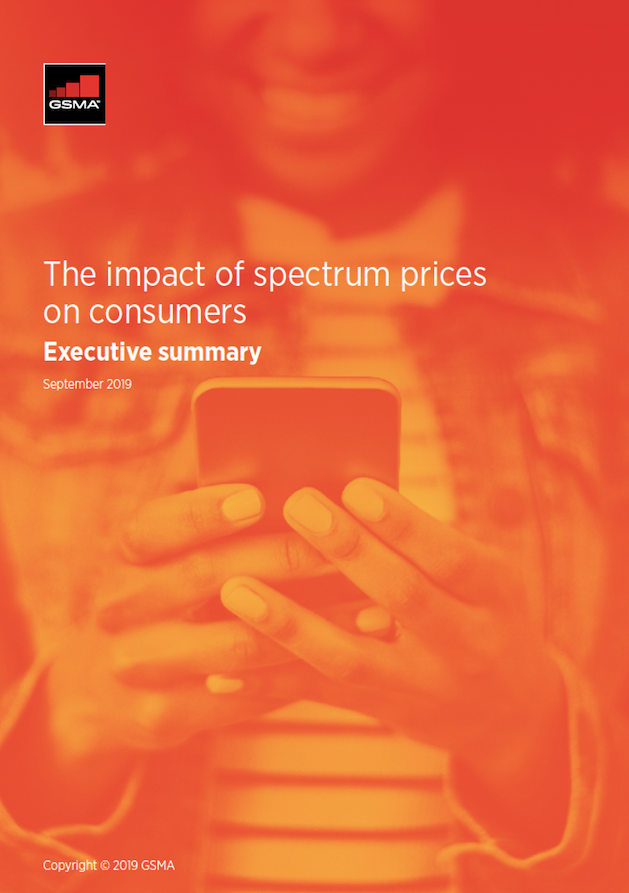
Effective spectrum pricing
4. Access to mid-band spectrum
Mid-band spectrum is crucial for the successful rollout of 5G. It provides city-wide capacity for enhanced mobile broadband and FWA applications that will deliver access to services from online education to public administration, enable smart cities and drive digital industry. The GSMA has estimated that on average, a total of 2 GHz of mid-band spectrum will be required per market to support the growth of 5G by 2030. To realise the potential benefits, countries across APAC must fulfil mid-band needs in harmonised ranges including 3.5 GHz and 6 GHz to deliver economies of scale and lower broadband costs.
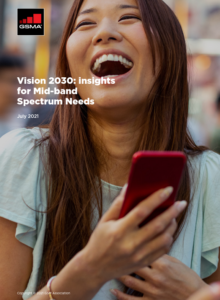
Mid-band spectrum needs
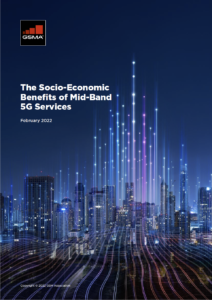
Socio-economic benefits of mid-band
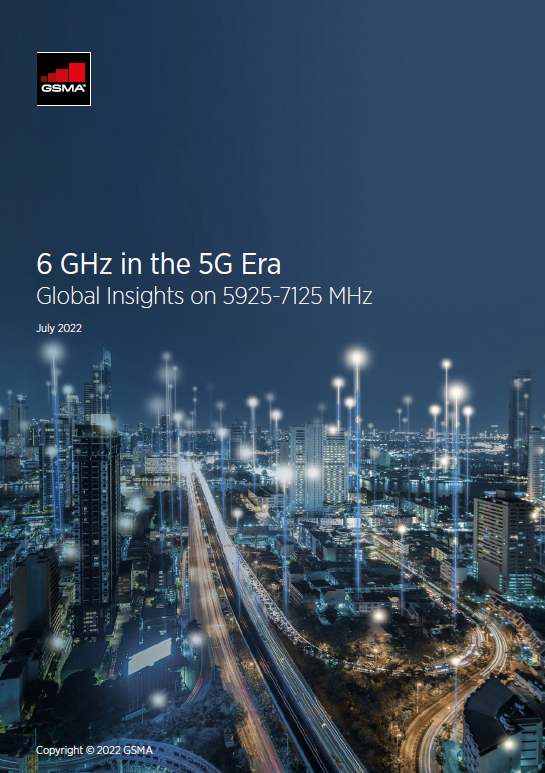
6 GHz in the 5G era
5. Low-band spectrum
Low-band spectrum is the cornerstone of digital equality and a driver of broad and affordable connectivity, reducing the gap between urban and rural areas and delivering affordable connectivity. Without sufficient low-band spectrum, the digital divide is likely to widen, and those living in rural areas will be excluded from the latest digital technologies.
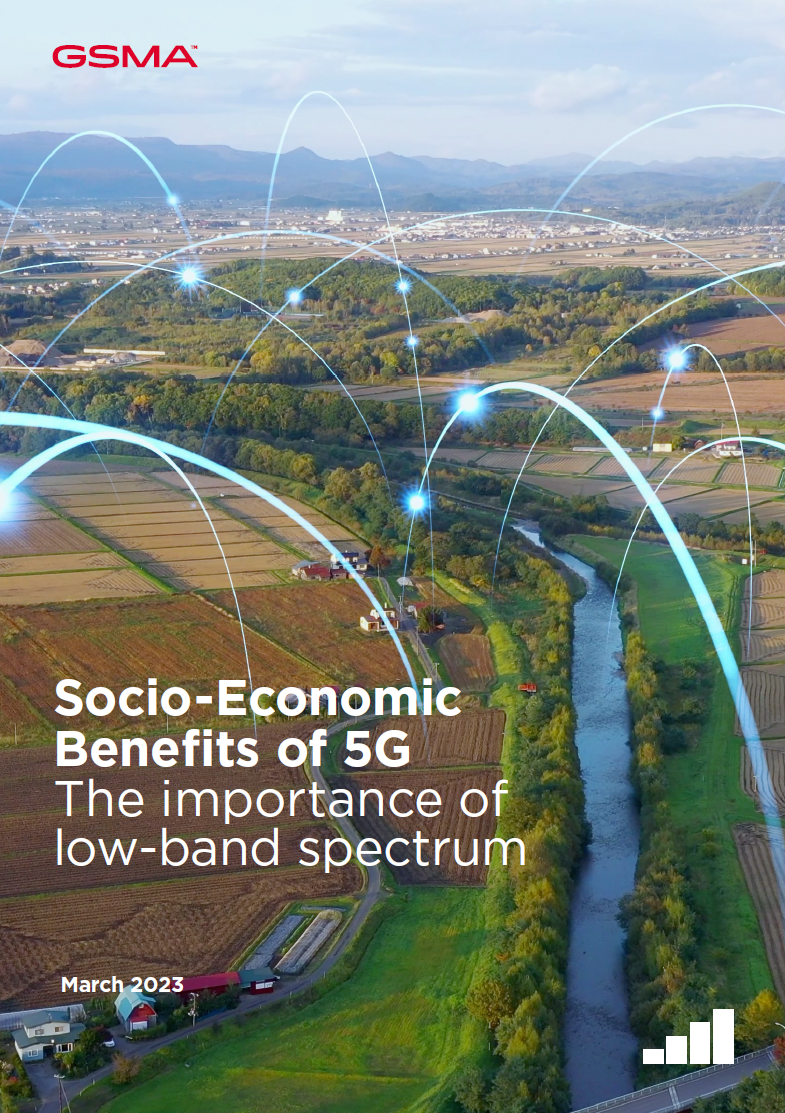
Socio-economic benefits of low bands

Low-band spectrum vision
Learn more about 5G spectrum, the GSMA’s content on this hot topic is collected here.

